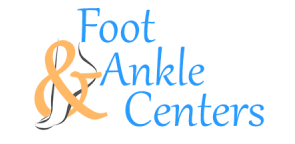BUNIONS
What is a Bunion?
It is a bump that appears inside the foot, around the metatarsophalangeal (MTP) joint (near the big toe). This bump is a bone protruding toward the inside of the bigfoot.
Left untreated, it can cause severe pain and even hinder walking abilities. Bunions are a common problem most women deal with, but men develop them too.
Most people develop bunions from wearing poor-fitting shoes—though they can also be passed down genetically as well.
Types of Bunions
A bunion typically develops when the weight of your body falls unevenly on the joints and tendons in your feet. It is usually due to poor-fitting shoes or genetic deformities. The most common types of bunions include:
Tailor's bunion: A bunionette occurs when the fifth metatarsal bone (smallest toe) starts to expand outward, forming a bony growth near the little toe.
Acute bunion: This condition causes bony masses to form near the toe joints as a result of bursitis.
Adolescent bunion: Teenagers may develop it at the base of their big toe. It may cause pain and can get worse over time without treatment from our doctors.
Bunion Treatment
If left untreated, bunions can become so painful that you might end up walking differently just to relieve it can seriously affect the foot’s ability to function properly.
To treat bunions, your healthcare provider will begin with conservative methods designed to relieve pressure and restore function. The most common conservative approaches to alleviating it include:
Shoe choice: Choose shoes with wide insteps, broad toes, and soft soles, and avoid shoes that are narrow, tight, or sharply pointed.
Custom orthotics: To relieve pressure from the affected areas, your doctor may recommend custom shoe inserts.
Forefoot products: Products like a bunion shield, night splint, or bunion bandages may be prescribed to treat bunions.
Conservative approaches like these are designed to limit the progression of it, relieve pain, and provide a healthy environment for the foot. In more serious cases, bunion surgery may be recommended.
At Foot & Ankle Centers, our doctors can provide diagnosis and treatment options. Please schedule an appointment with our foot doctor for a complete evaluation.
HAMMER TOES
What is Hammer Toe?
It is a deformity in the foot that causes toes to bend or curl downward rather than point forward. This deformity is typically the result of a muscle imbalance between the tendons on the top and the tendons on the bottom of the toe.
Hammer toes can be flexible or rigid, affecting any toe on your foot. Most cases of it are reported on the second or third toe. Women are at a higher risk of developing it compared to men—this is usually a result of shoe choice.
Hammer toes tend to worsen over time, so it's important to seek medical treatment when they begin forming. Because of this, it can become a serious problem—this is especially true for people with diabetes—that could affect your ability to walk.
Hammer Toe Causes and Types
There are generally two types of it — flexible and rigid. If the toe can still move at the joint and is still moving, it is considered flexible. It is the beginning stages of its development and can be reversed non-surgically.
If left untreated, your flexible hammer toe can become rigid, meaning the toe can no longer move on its own. This type of condition usually requires surgery to correct. It develops due to an imbalance of the muscles in the toes. The unbalance typically causes increased pressure on the tendons and joints in the toe.
While poor shoe choice is typically the main cause of it, other common causes include:
Heredity
Trauma
Arthritis
Other foot conditions (such as bunions or corns)
Hammer Toe Treatment
The treatment varies depending on the severity of your condition. To treat mild conditions, your podiatrist will start with conservative methods — such as padding or anti-inflammatory medications.
Flexible hammer toes can be corrected by simply wearing properly fitting shoes. Other treatments involve gently stretching the toes to relieve pain and reposition it. If the toe has become rigid and is causing too much pain, your physician may choose to surgically remove the deformity.
Hammer toe surgery is performed to reposition the toe, remove deformed or injured bone, and realign tendons. Most procedures are performed on an outpatient basis and rarely require extended downtime or time away from work.
Our foot doctors can help you find relief. Schedule a consultation with us today.



